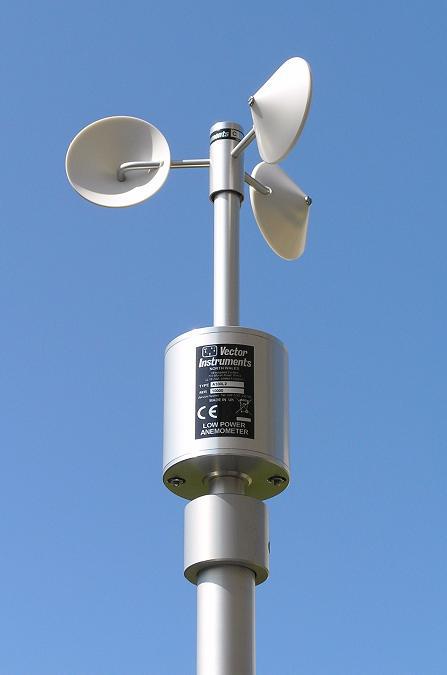Specialist Tips for Adjusting Your Anemometer for Optimal Efficiency
Specialist Tips for Adjusting Your Anemometer for Optimal Efficiency
Blog Article
All You Need to Learn About Anemometers: Just How They Function, Why They Matter, and Where to Make use of Them
Anemometers, though usually ignored in the world of scientific tools, play an essential function in numerous areas, supplying useful insights right into wind rate and air movement patterns. As we delve into the ins and outs of anemometer innovation, we will certainly reveal the internal workings of these devices, their relevance, and the crucial factors to consider when selecting the best anemometer for certain applications.

Anemometer Basics
An important tool utilized to measure wind speed and instructions, the anemometer plays a crucial function in weather forecasting and various sectors. An anemometer commonly consists of 3 or four mugs that rotate in the wind, a vane that directs into the wind, and sensors to track the activities or rotations.
There are various kinds of anemometers offered, including mug anemometers, vane anemometers, hot-wire anemometers, and sonic anemometers, each with its unique functions and applications. Mug anemometers are frequently used for fundamental wind rate dimensions, while vane anemometers are chosen for directional dimensions. Hot-wire anemometers appropriate for reduced airspeeds, and sonic anemometers are suitable for high-precision measurements in study and industrial settings. Recognizing the fundamentals of anemometers is vital for exact wind data collection and evaluation across various sectors.
Concepts of Anemometer Procedure
Building on the fundamental understanding of anemometer basics, the concepts of anemometer operation elucidate the mechanics behind wind speed and instructions measurements. Cup anemometers, for instance, have 3 or even more cups that record the wind, triggering them to spin much faster as the wind speed increases. Hot-wire anemometers rely on a warmed cable that cools down as wind passes over it, with the rate of cooling down establishing the wind speed.
Importance of Anemometers
The importance of anemometers in meteorology and various sectors can not be overemphasized. Anemometers play a critical duty in determining wind speed and instructions, providing essential information for weather condition forecasting, environment studies, environmental tracking, and aviation procedures. Meteorologists rely upon anemometers to gather exact wind information, helping them understand weather patterns, predict tornados, and problem timely warnings to the general public. In industries such as construction, farming, renewable power, and maritime procedures, anemometers are utilized to optimize processes, ensure security, and enhance effectiveness. Wind ranch drivers make use of anemometers to evaluate wind problems and make the most of power manufacturing from wind turbines. In the maritime industry, anemometers help ship navigating by providing real-time wind info to captains, aiding them make notified choices to make certain important source risk-free voyages. Generally, anemometers are indispensable tools that contribute significantly to safety and security, performance, and informed decision-making in weather forecasting and a vast array of industries.
Applications Across Numerous Industries
Applications of anemometers span throughout diverse industries, showcasing their convenience and energy beyond weather forecasting. In the renewable resource market, anemometers play an important function in assessing wind problems for wind ranch placements, making sure ideal power manufacturing. Industries like building and mining use anemometers to monitor wind speeds, essential for safety and security protocols, specifically when functioning at elevations or in open-pit mines where strong winds can present dangers. Anemometers are additionally important in the air travel industry, assisting pilots in understanding airspeed and wind instructions for safe liftoffs and landings. The maritime field take advantage of anemometers for ship navigating, assisting sailors prepare for climate modifications and adjust routes appropriately. In agriculture, anemometers help farmers in handling plant splashing by providing real-time information on wind rate to avoid drift. In addition, anemometers locate applications in HVAC systems to optimize airflow and improve power effectiveness in structures. The varied use situations of anemometers highlight their relevance throughout numerous markets, highlighting their vital duty in enhancing functional security and performance (anemometer).

Choosing the Right Anemometer for Your Needs
For basic purposes, a cup anemometer is ideal try this web-site for measuring wind speed, while a vane anemometer offers wind instructions data. Hot-wire anemometers are suitable for low airspeed dimensions, and ultrasonic anemometers use high precision and sturdiness.

Conclusion
In conclusion, anemometers play a critical function in determining wind speed and direction throughout different sectors. Recognizing the concepts of anemometer operation is you could try this out essential for choosing the best tool for details needs. From weather forecasting to aviation, anemometers are important devices for ensuring and gathering exact data security in different applications. When choosing the most ideal tool for determining wind conditions., it is vital to take into consideration the relevance of anemometers in order to make educated decisions.
There are numerous types of anemometers offered, consisting of mug anemometers, vane anemometers, hot-wire anemometers, and sonic anemometers, each with its unique functions and applications. Mug anemometers are frequently utilized for fundamental wind rate measurements, while vane anemometers are liked for directional measurements. Hot-wire anemometers are suitable for reduced airspeeds, and sonic anemometers are optimal for high-precision measurements in research study and industrial settings.Building on the foundational understanding of anemometer basics, the principles of anemometer procedure elucidate the technicians behind wind speed and direction measurements. For general purposes, a cup anemometer is suitable for determining wind rate, while a vane anemometer provides wind instructions data.
Report this page